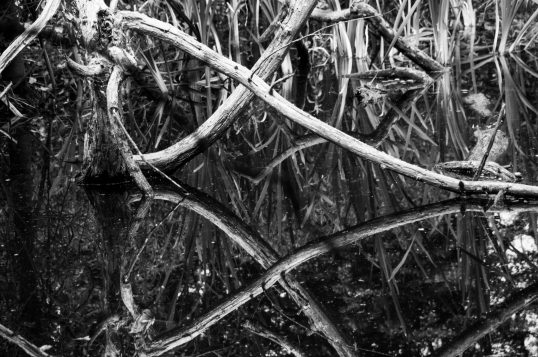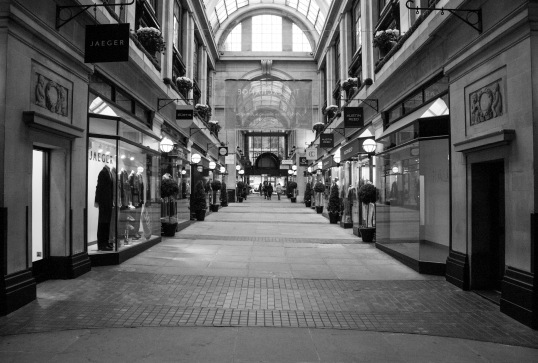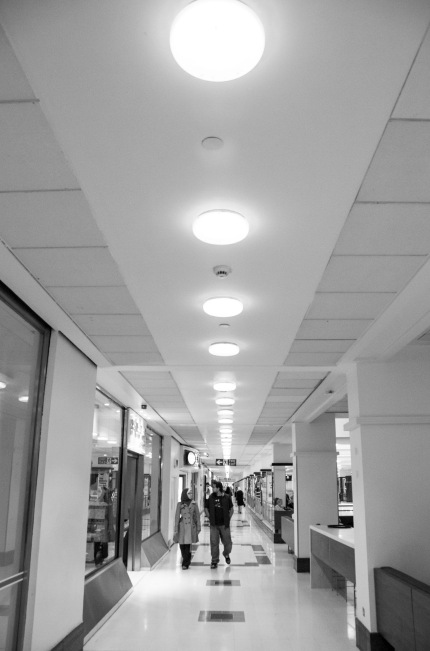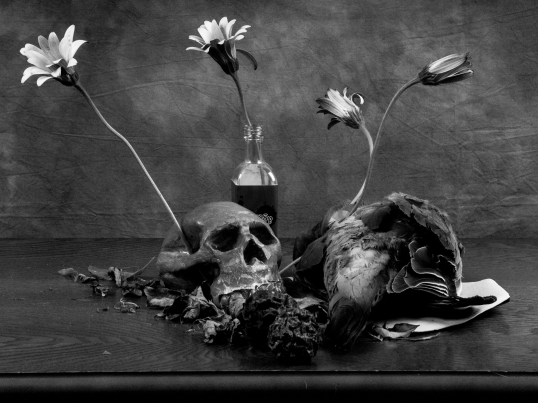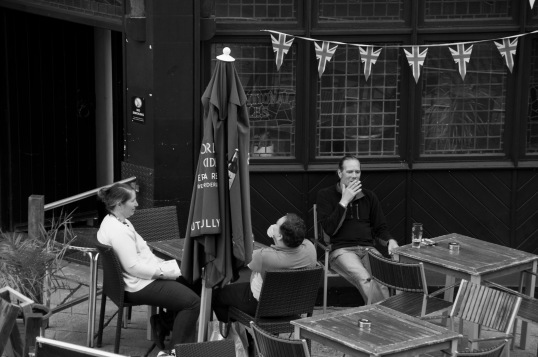Real and implied triangles
This exercise requested two sets of three photographs, one set of ‘real’ triangles and one set of ‘implied’ triangles; each with a triangular composition. I’ve split the images up into the two sets and labelled them accordingly.
Real
Reflection of Dead Wood (subject itself triangular)
These dead and dry branches shape a few triangles in this image but they are formed with a little help from either a reflection or the edge of the frame. The contrast has really helped to pick out the fashioned shapes and have given them definition. The shapes above the water are mirrored in the reflection on the surface. Initially, when you first look at this image, you see four or five; the more you look, the more they just keep appearing; I have counted in excess of ten triangles in this image.
The Exchange, Nottingham (triangle converging at the top)
By perspective, four converging triangles have been formed in this image. The most dominant triangle and the one we are focusing on for this part of the exercise, is the triangle at the bottom of the image; this is the centre’s floor. With the floor being lighter, clearer and free of detail, it has governed the image; it has defined itself and is the first thing the viewer notices. This triangle adds strength, stability and power to the image.
Victoria Centre, Nottingham (triangle converging at the bottom)
Clearly, this triangle dominates because of its sheer size and how much space it exploits in the frame, it is also helped to be noticed by the lights that run through the centre of it. The viewpoint is much different from that of the previous image, perhaps the previous image may have benefited from a similar viewpoint but in reverse. The contrasting contours on the periphery of the triangle help to shape it.
Implied
Still life project forming a triangle with the apex at the top
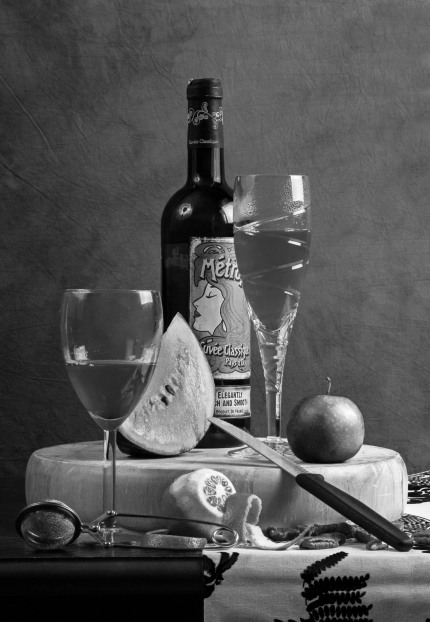 The edge of the table acts as the base of the triangle and the tip of the wine bottle as the apex. Each object has been strategically placed so that its highest or most outwardly point helps to construct an implied line and therefore, a triangle. The knife has been deliberately positioned to carry the viewer’s eye into the centre of the image and has helped fabricate an apex of the implied triangle.
The edge of the table acts as the base of the triangle and the tip of the wine bottle as the apex. Each object has been strategically placed so that its highest or most outwardly point helps to construct an implied line and therefore, a triangle. The knife has been deliberately positioned to carry the viewer’s eye into the centre of the image and has helped fabricate an apex of the implied triangle.
Still life project forming a triangle with the apex at the bottom
The dried damson at the forefront of the display act as the apex of the triangle, completed by the two flower heads furthest away from each other. Although the stems of the flowers contour two of the three sides of the triangle, it doesn’t stand out more than the one in the previous image.
Three people arranged in a group
For this picture, I took a candid shot of three people all sat in a beer garden on a rather gloomy day, I thought this shot had character. It’s quite a simple shot and demonstrates the objective very well; the triangle, with its apex at the bottom, is formed by the eyes and heads of the group as they look at each other. To reinforce the theme, I decided to include the little triangular flags in the top right of the image to repeat the premise.
Conclusion
I have learned in this exercise that incorporating a triangular shape into an image can add stability and interest. Stability can be introduced by the use of a level base, which we already know from the ‘vertical and horizontal lines’ exercise; formed by perspective, they can add a sense of direction or movement. I think that everything that we have learned separately in ‘vertical and horizontal lines’ and ‘diagonal lines’ we have learned to incorporate into one image in this exercise, if the triangle is cleverly formed. This, of course, wouldn’t work in every scenario. The triangle is a very simple shape to integrate into an image and so versatile and easy to create, but the result of the image can be very profound and complex. I will strongly consider using triangles in more of my images as the results are so diverse that a triangle could benefit an image more often than not.
